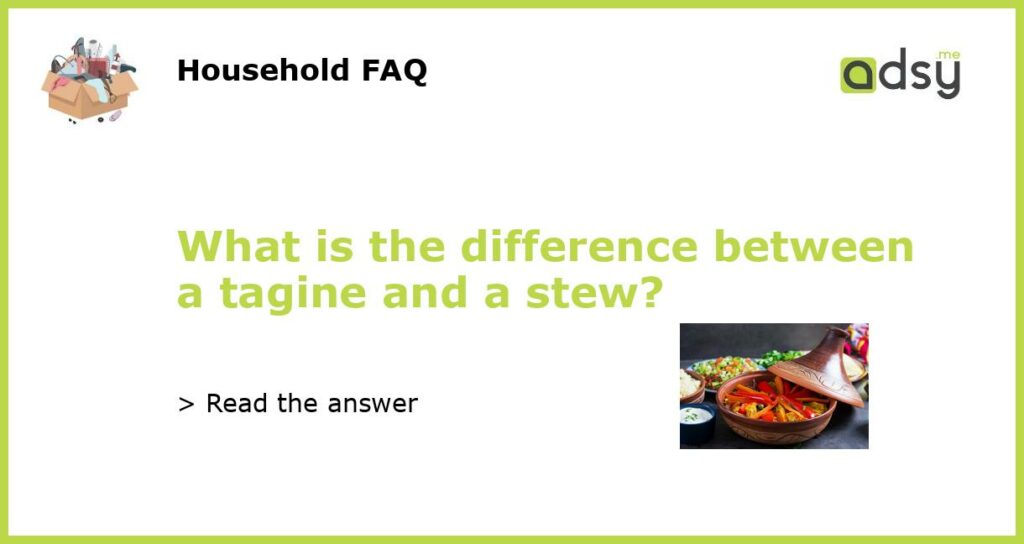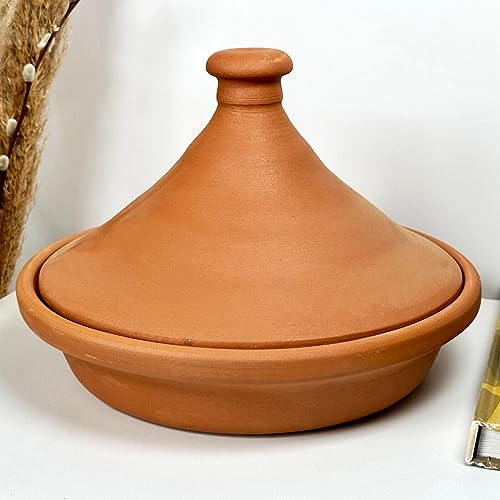Tagine vs. Stew: Understanding the Differences
If you’ve ever delved into the rich world of North African and Middle Eastern cuisine, you’ve likely come across two popular dishes: tagine and stew. While both are flavorful and delicious, there are some key differences between them. Whether you’re a food enthusiast or simply curious about culinary traditions, let’s explore the distinctions between tagine and stew.
What is a Tagine?
A tagine is both a cooking vessel and a dish. The cooking vessel, also called a tagine, is a traditional Moroccan earthenware pot with a conical lid. It consists of two parts: a circular base and a cone-shaped lid. The base is wide and shallow, while the lid is tall and tapered. The design of the tagine allows for condensation to build up on the lid, which then drips back into the dish, ensuring a moist and tender final result.
The dish itself, also known as tagine, refers to the food prepared in the pot. Tagine dishes are typically slow-cooked, braised, and infused with a blend of spices and aromatic ingredients, such as saffron, ginger, cumin, and coriander. Traditional tagine recipes often feature meat, such as lamb or chicken, along with vegetables, dried fruits, and nuts. However, vegetarian and vegan versions with ingredients like chickpeas and eggplant are also popular.
What is a Stew?
A stew is a cooking method that involves simmering ingredients in a liquid over low heat. It is a versatile and flexible technique used in cuisines around the world. A stew can be made with various proteins, including beef, poultry, seafood, and even plant-based options like tofu or tempeh. The cooking liquid can be broth, stock, wine, or a combination of these, and it is often thickened with ingredients like flour or cornstarch.
Stews can be seasoned with a wide range of herbs and spices, depending on the desired flavor profile. Common additions include bay leaves, thyme, rosemary, paprika, and black pepper. Vegetables like potatoes, carrots, onions, and celery are frequently included, and additional flavorings such as garlic and tomato paste can be used.
The Differences
While tagines and stews share some similarities, there are distinct differences that set them apart:
- Cooking Vessels: A tagine uses a specific type of earthenware pot with a conical lid, whereas stews can be cooked in any suitable pot or pan.
- Moisture Retention: Tagines are designed to trap and retain moisture, thanks to the conical lid that creates a condensation cycle. Stews typically require additional liquid to cover the ingredients adequately.
- Spices and Aromatics: Tagines often feature a more pronounced use of spices, such as saffron, ginger, and cumin. Stews can be seasoned with a wide range of herbs and spices, depending on the desired flavor profile.
- Cooking Technique: Tagines are traditionally slow-cooked over low heat, allowing the flavors to meld and intensify. Stews can be cooked using various methods, such as stovetop, oven, or slow cooker, and the cooking time can vary.
- Regional Influence: Tagines are associated with Moroccan cuisine, while stews are common in many different culinary traditions worldwide, including European, Asian, and African cuisines.
While both tagines and stews are delicious and nourishing dishes, they differ in terms of cooking vessel, moisture retention, spices, cooking technique, and regional influence. Whether you’re in the mood for the rich flavors of Moroccan cuisine or looking to explore global culinary traditions, understanding the differences between tagine and stew will help you appreciate the unique aspects of each dish. So, why not try your hand at a classic tagine recipe or experiment with a hearty stew? Happy cooking!






